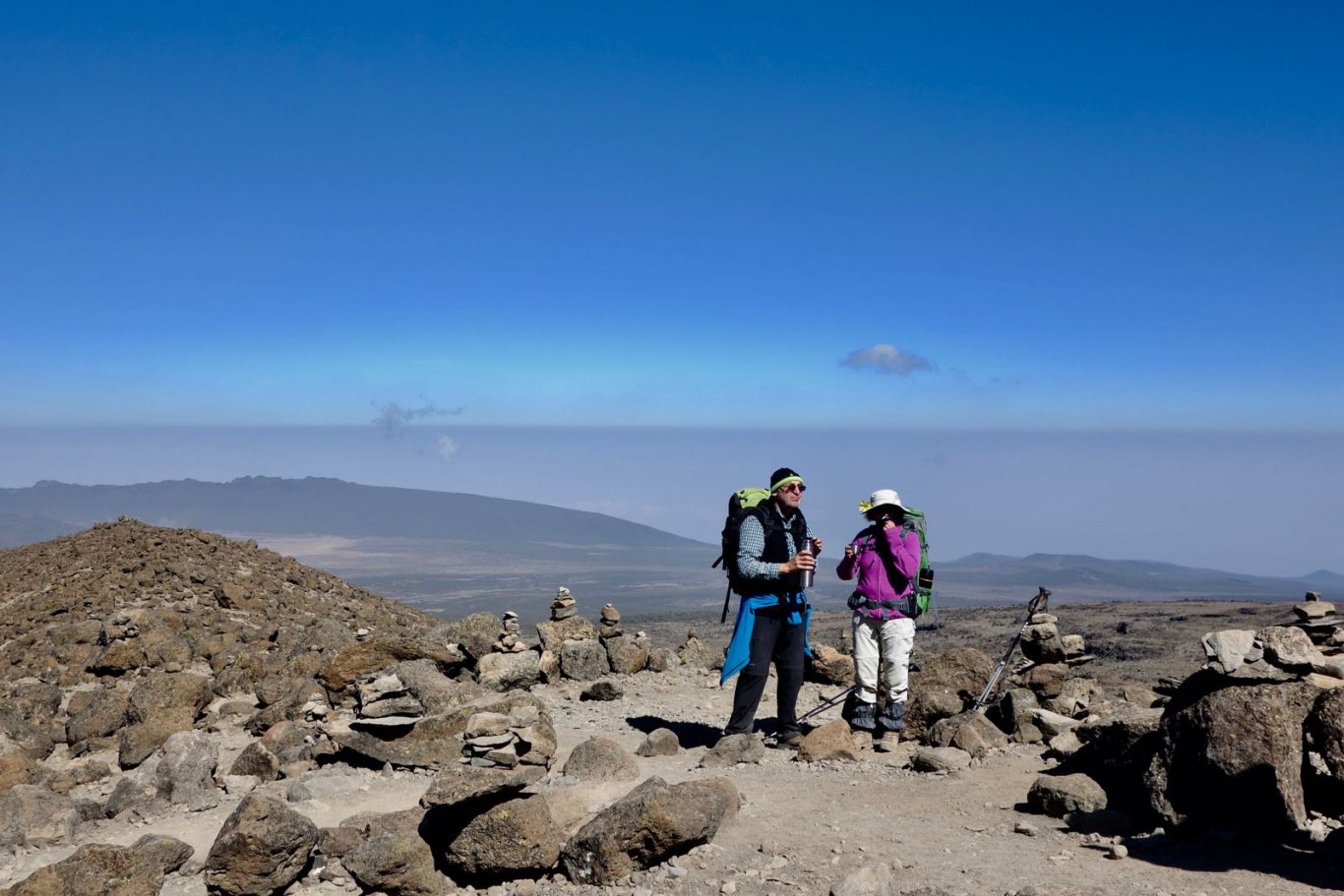So, you have decided to take on the challenge of tackling Africa's highest peak? Next, you need to think about the best time to climb Kilimanjaro, in terms of weather, trekking conditions and popularity.
Although it's technically possible to trek Tanzania's Mount Kilimanjaro year round, there are certain months which are characterized by colder weather, more rain and potentially lots of snow on the summit.
We generally advise that the best time to climb Kilimanjaro is during the warmest and driest times of year, from December to mid-March and mid-June to the end of October.
However, although these are considered to be the best times to climb the mountain in terms of weather, they are also the busiest months.
Here, we break down Kilimanjaro climbing season, off-peak alternatives and times to avoid, plus other factors to consider, so you can plan the best time to take on this mountain adventure.
- Climbing Kilimanjaro in January & February
- Climbing Kilimanjaro in March, April & May
- Climbing Kilimanjaro in June
- Climbing Kilimanjaro in July, August, September & October
- Climbing Kilimanjaro in November
- Climbing Kilimanjaro in December
- Climbing Kilimanjaro During a Full Moon
Other Things to Consider for Your Kilimanjaro Trek
Climbing Kilimanjaro in January & February
Elephants near Mount Kilimanjaro in Tanzania
January and February are two of the best months to climb Mount Kilimanjaro and therefore also the most popular. They are the warmest months, so you can expect clear, sunny skies in the mornings and evenings, however clouds may appear in the afternoons and you may experience some rain.
Climbing Kilimanjaro in March, April & May
The long rainy season starts at the end of March and continues through to early June. We do not recommend climbing Kilimanjaro during this time, as the trails can be very wet, muddy and snowy.
Climbing in the rain is likely to be less enjoyable and means you’ll miss out on the spectacular views and photo opportunities. On the other hand, if you do choose to trek at this time of year, you’ll avoid the crowds on the trails (even the most popular routes can offer solitude, peace and tranquillity) and at the campsites.
What's more, some people relish the idea of climbing Kilimanjaro when the summit is likely to be snow-capped, as this can add an additional element of challenge (as well as beautiful landscapes) to your mountain trekking adventure.
Climbing Kilimanjaro in June
June sees the transition from the rainy season to the dry season, so this month tends to be much drier than March, April and May. However, you should be prepared for cold temperatures and the skies are typically still cloudy, which means that you won’t necessarily have such impressive views.
In June and the weather is great. Further down the mountain you are in a pretty warm, humid, tropical jungle environment, but once we passed up through the clouds, it was clear skies day and night. The final ascent was really tough, and you do it at night. We only encountered snow and ice past Stella Point, which is actually a really sad comment on climate change.
Climbing Kilimanjaro in July, August, September or October
From July until the end of October, conditions are generally colder, but much drier than the previous months. Whilst there is a chance of getting rained on throughout the year, particularly as you trek through the rainforest and moorlands, typically precipitation is low and infrequent.
If you remain dry, you’ll be more comfortable and the trek will be a more enjoyable experience overall. Another advantage of climbing during these months is that you’ll have clear and sunny skies, and spectacular views.
The disadvantage of trekking during these months is that the trails can become quite busy, however some people welcome the opportunity to chat with other groups at the campsites. After all, team spirit is essential for pushing yourself to the summit.
Climbing Kilimanjaro in November
Tanzania's short rainy season starts at the beginning of November and continues until the beginning of December. Afternoon rains are common, but you can expect clear skies in the mornings and evenings. This is not considered an ideal month to trek Mount Kilimanjaro, as conditions can be very wet, muddy and slippery.
Climbing Kilimanjaro in December
The short rainy season often runs into December, however this is still a popular time to climb Mount Kilimanjaro.
Climbing Kilimanjaro During Full Moon
During a full moon, the summit of Mount Kilimanjaro is particularly beautiful. The glaciers are lit up by the bright moon and the views are absolutely stunning. Another advantage of trekking at this time is that the moonlight will improve your visibility throughout your trek, most importantly during your final ascent to Uhuru Peak.
Although it's not necessary to reach the summit on the exact full moon date to take advantage of the moonlight, many people wish to reach Uhuru Peak when the moon is at its fullest.
If you do wish to summit on a full moon, a seven-day climb should start five days before the full moon date and an eight-day climb should start six days prior to the full moon date. Book well in advance, as only a limited number of people are allowed on the mountain at any time and these dates are very popular.
If you’re looking for a quieter trek – and a sky full of bright stars – we recommend that you avoid the full moon period altogether.

